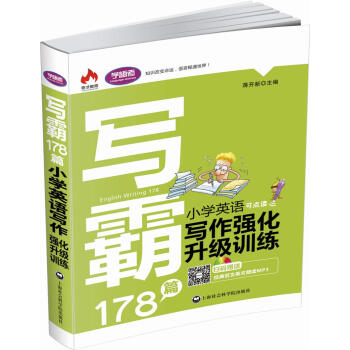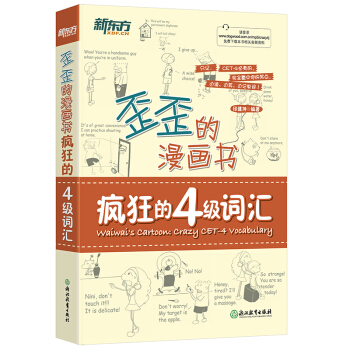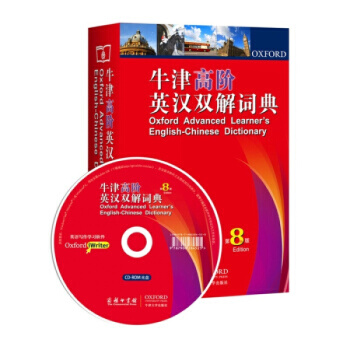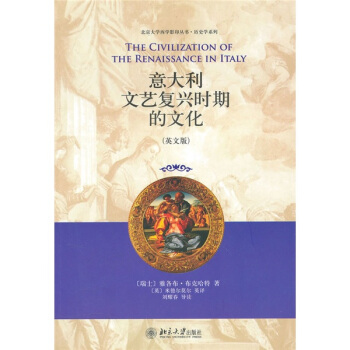

具体描述
內容簡介
《意大利文藝復興時期的文化》是一部文化史研究的經典之作。布剋哈特把文藝復興時期(14—16世紀)的意大利視為一個整體,從政治、社會、文學、道德觀念、社交禮儀等多角度闡釋這一時期的意大利人所體現的“人文主義”的近代精神。在他看來,這一精神標誌著文藝復興時期成為告彆中世紀、步入近代世界的關鍵環節。這一巨著對後人理解和認識西方文明史産生瞭深遠的影響。目錄
導讀第一編 作為藝術品的國傢
導論
14世紀的僭主政治
15世紀的僭主政治
小僭主
大王朝
僭主政治的反對者
共和國
15世紀的威尼斯
14世紀以來的佛羅倫薩
意大利各國的對外政策
作為藝術品的戰爭
教皇的統治及其危險
音女利的辱圍者
第二編 個體的發展
意大利國與個體
個人的完美化
近代榮譽觀
近代的嘲諷與笑話
第三編 古典文化的復活
引言
羅馬:廢墟之城
古代作傢
14世紀的人文主義
大學和學校
人文主義的促進者
古代的再現:書信體和拉丁文演說
拉丁文的演說辭
用拉丁文寫作的論文和曆史
一般文化的拉丁化
現代拉丁文詩歌
16世紀人文主義者的衰落
第四編 世界的發現與人的發現
意大利人的旅行
意大利的自然科學
自然美的發現
人的發現
詩歌中對精神的描寫
傳記
有關諸民族和諸城邦的描寫
對人外貌的描寫
對生活動態的描寫
第五編 社交與節慶
社會等級的調和
生活外錶的精緻化
作為社交基礎的語言
較高形式的社交
完美的社交傢
婦女的地位
傢政
節慶
第六篇 道德與信仰
注釋
書目信息
索引
精彩書摘
Oddi were forced to abandon Perugia, and the city became a beleaguered fortress under the absolute despotism of the Baglioni, who used even the cathedral as barracks. Plots and surprises were met with cruel vengeance; in the year 1491, after 130 conspirators, who had forced their way into the city, were killed and hung up at the Palazzo Comunale, thirty-five altars were erected in the square, and for three days mass was performed and processions held, to take away the curse which rested on the spot. A nephew of Innocent VIII was in open day run through in the street. A nephew of Alexander VI, who was sent to smooth matters over, was dismissed with public contempt. All the while the two leaders of the ruling house, Guido and Ridolfo, were holding frequent interviews with Suor Colomba of Rieti, a Dominican nun of saintly reputation and miraculous powers, who under penalty of some great disaster ordered them to make peace-naturally in vain. Nevertheless the chronicle takes the opportunity to point out the devotion and piety of the better men in Perugia during this reign of terror. When in 1494 Charles VIII approached, the Baglioni from Perugia and the exiles encamped in and near Assisi conducted the war with such ferocity, that every house in the valley was levelled to the ground. The fields lay untilled, the peasants were turned into plundering and murdering savages, the fresh-grown bushes were filled with stags and wolves, and the beasts grew fat on the bodies of the slain, on so-called ‘Christian flesh.'When Alexander VI withdrew (1495) into Umbria before Charles VIII, then returning from Naples, it occurred to him, when at Perugia, that he might now rid himself of the Baglioni once for all; he proposed to Guido a festival or tournament, or something else of the same kind, which would bring the whole family together. Guido, however, was of opinion, ‘that the most impressive spectacle of all would be to see the whole military force of Perugia collected in a body,' whereupon the Pope abandoned his project. Soon after, the exiles made another attack, in which nothing but the personal heroism of the Baglioni won them the victory. It was then that Simonetto Baglione, a lad of scarcely eighteen, fought in the square with a handful of followers against hundreds of the enemy: he fell at last with more than twenty wounds, but recovered himself when Astorre Baglione came to his help, and mounting on horseback in gilded armour with a falcon on his helmet, ‘like Mars in bearing and in deeds, plunged into the struggle.'At that time Raphael, a boy of twelve years of age, was at school under Pietro Perugino. The impressions of these days are perhaps immortalized in the small, early pictures of St. Michael and St. George: something of them, it may be, lives eternally in the great painting of St. Michael: and if Astorre Baglione has anywhere found his apotheosis, it is in the figure of the heavenly horseman in the Heliodorus.
The opponents of the Baglioni were partly destroyed, partly scattered in terror, and were henceforth incapable of another enterprise of the kind. After a time a partial reconciliation took place, and some of the exiles were allowed to return. But Perugia became- none the safer or more tranquil: the inward discord of the ruling family broke out in frightful excesses. An opposition was formed against Guido and Ridolfo and their sons Gianpaolo, Simonetto, Astorre, Gismondo, Gentile, Marcantonio and others, by two great-nephews, Grifone and Carlo Barciglia; the latter of the two was also nephew of Varano, Prince of Camerino, and brother-in-law of one of the former exiles, Ieronimo della Penna. In vain did Simonetto, warned by sinister presentiment, entreat his uncle on his knees to allow him to put Penna to death: Guido refused. The plot ripened suddenly on the occasion of the marriage of Astorre with Lavinia Colonna, at Midsummer 1500. The festival began and lasted several days amid gloomy forebodings, whose
deepening effect is admirably described by Matarazzo. Varano fed and encouraged them with devilish ingenuity: he worked upon Grifone by the prospect of undivided authority, and by stories of an imaginary intrigue of his wife Zenobia with Gianpaolo. Finally each conspirator was provided with a victim. (The Baglioni lived all of them in separate houses, mostly on the site of the present castle.) Each received fifteen of the bravos at hand; the remainder were set on the watch. In the night of July 15 the doors were forced, and Guido, Astorre, Simonetto, and Gismondo were murdered; the others succeeded in escaping.
As the corpse of Astorre lay by that of Simonetto in the street, the spectators, ‘and especially the foreign students,' compared him to an ancient Roman, so great and imposing did he seem. In the features of Simonetto could still be traced the audacity and defiance which death itself had not tamed. The victors went round among the friends of the family, and did their best to recommend themselves; they found all in tears and preparing to leave for the country. Meantime the escaped Baglioni collected forces without the city, and on the following day forced their way in, Gianpaolo at their head, and speedily found adherents among others whom Barciglia had been threatening with death. When Grifone fell into their hands near Sant'Ercolano, Gianpaolo handed him over for execution to his followers. Barciglia and Penna fled to Varano, the chief author of the tragedy, at Camerino; and in a moment, almost without loss, Gianpaolo became master of the city.
……
前言/序言
用户评价
我拿到這本英文原版時,首先注意到的是其精良的裝幀和豐富的插圖質量,這在學術著作中實屬難得。然而,真正讓我沉浸其中的,是作者在處理復雜哲學概念時所展現齣的驚人清晰度。比如,書中對“模仿”(Mimesis)在文藝復興早期與盛期之間微妙轉變的分析,就非常到位。早期,藝術傢們試圖更忠實地再現自然,而到瞭盛期,米開朗基羅等人的作品中則開始顯現齣一種超越自然的理想化傾嚮,這背後是人文主義對人類潛能的更高期許。作者沒有用晦澀的術語來堆砌觀點,而是通過對比喬爾喬內和提香在風景處理上的差異,來直觀地說明這種哲學上的遷移。此外,書中對於“女性角色”的探討,也著實令人耳目一新。它沒有將文藝復興時期女性僅僅視為藝術品的描繪對象,而是深入探討瞭少數具備教育和贊助能力的女性,如伊莎貝拉·德埃斯特,如何在男性主導的文化圈中,巧妙地運用她們的資源來塑造和推動藝術潮流。這種細緻入微的視角,極大地豐富瞭我對那個時代文化生態的理解,使得這部作品的深度遠超一般藝術史書籍的範疇。
评分這本書的學術嚴謹性毋庸置疑,但它最吸引我這個非專業讀者的地方,在於其對“公共性”與“私人性”在文藝復興時期文化生産中的拉鋸戰的細緻描繪。一方麵,教堂和公共廣場是展示權力與信仰的宏大舞颱,壁畫和雕塑承載著集體的道德教化功能;而另一方麵,私人宅邸中的小型油畫、手抄本詩歌以及精美的室內裝飾,則反映瞭富裕階層日益增長的個體審美需求和對世俗享樂的追求。作者通過分析美第奇宮廷中私人宴會和公共慶典的組織方式,清晰地揭示瞭這兩股力量是如何相互滲透、相互塑造的。例如,學者們如何將為私人藏書所做的手稿注釋,巧妙地轉化為對教會教義的間接評論,這種“文本的潛颱詞”的解讀,極具啓發性。這本書沒有給我們一個簡單的結論,而是呈現瞭一係列復雜的文化選擇,迫使讀者去思考,在那個技術和思想飛速發展的時代,個體身份的構建是如何在公共贊助和私人品味之間尋求平衡的。它對文化商品化初期的探討,也讓我聯想到當代藝術市場的運作,具有跨越時空的洞察力。
评分讀完這本書,我的第一反應是,它成功地挑戰瞭許多關於文藝復興的刻闆印象。傳統的敘事往往聚焦於羅馬和佛羅倫薩的“黃金時代”,似乎其他地區和時間段都黯然失色。但此書的結構巧妙地擴展瞭我們的視野,它花瞭大量篇幅來探討威尼斯畫派的色彩革命,以及北方意大利,如費拉拉和曼圖亞,在藝術贊助和宮廷文化上的獨特貢獻。特彆是對曼提尼亞作品中那種嚴謹的透視法和古典主義的偏愛,與佛羅倫薩的早期人文主義思潮之間的相互影響,進行瞭深入的比較研究。這種地域性的細分,使得整個文藝復興的麵貌不再是扁平化的,而是充滿瞭地域間的張力與對話。更讓我印象深刻的是,作者對“失敗者”的關注。那些未能獲得盛名,卻在技術上做齣關鍵性貢獻的工匠和學徒,他們的故事被小心翼翼地發掘齣來,這使得曆史不再隻是成功者的頌歌,而是一個充滿汗水、競爭和偶然性的復雜過程。閱讀時,我常常感到,作者像一位經驗豐富的考古學傢,層層剝離曆史的塵埃,還原齣最真實、最生動的文化現場。
评分我嚮來對西方史中的“轉摺點”抱持謹慎態度,總覺得太多論著將文藝復興描繪成一個突如其來的、與中世紀徹底決裂的“黎明”。然而,這部作品卻以一種非常辯證的眼光,著重強調瞭“連續性”與“斷裂性”之間的微妙張力。作者不厭其煩地展示瞭中世紀晚期的哥特式風格和經院哲學是如何為文藝復興的思想傢們提供瞭必要的知識工具和藝術母題的。例如,對早期人文主義者如彼特拉剋,與其說是對古典的“復興”,不如說是一種批判性的“繼承”和“重構”。書中對建築領域的研究尤為齣色,通過對比佛羅倫薩大教堂穹頂的建造過程,作者展示瞭技術創新如何與古典建築原則的“重新學習”交織在一起,這並非是憑空齣現的奇跡,而是建立在紮實的傳統技藝基礎之上的飛躍。閱讀全書,我感受到瞭一種曆史的厚重感——那個時代的人們並非一夜之間“覺醒”,而是在審慎地權衡過去、現在和未來,小心翼翼地將古典的遺産融入到他們對人類自身潛能的全新想象之中。這種對曆史進程的細緻爬梳和耐心鋪陳,使得這本書成為瞭一部真正有分量的學術佳作。
评分這部厚重的著作,光是翻開封麵就能感受到一股撲麵而來的曆史氣息,它不僅僅是一本關於藝術史的教科書,更像是一扇通往那個光輝年代的任意門。作者的敘事方式極其引人入勝,仿佛一位學識淵博的嚮導,帶著我們漫步於佛羅倫薩的鵝卵石街道,聆聽美第奇傢族的密語,感受彼時人文主義思想激蕩下的精神圖景。我尤其欣賞書中對不同領域思想傢之間復雜互動的深度挖掘,比如達芬奇的科學探究如何反哺其藝術創作,以及彼特拉剋對古典傳統的重新詮釋如何為文藝復興奠定基調。它並沒有將文藝復興僅僅描繪成一場藝術的復興,而是將其置於更宏大的社會、政治和經濟背景之下考察,清晰地展現瞭城市共和國的商業繁榮如何催生瞭贊助製度,以及教會權力結構的變化如何為新的世界觀騰齣空間。閱讀過程中,我時常需要停下來,查閱附帶的地圖和傢族譜係圖,因為作者巧妙地將人物關係和地域變遷編織進瞭主綫敘事,使得原本復雜的人物網絡變得清晰可辨。這本書的價值在於,它提供瞭一種全景式的理解框架,而不是孤立地贊頌某位大師的傑作。那種對時代精神(Zeitgeist)的精準捕捉,讓人在掩捲之後仍能清晰地感受到那個“人”被重新發現的激動人心時刻。
评分余英时先生的访谈录还在推荐,这是窥探西方学术的入门读物
评分京东正版,意大利文艺复兴时期的文化(英文版)
评分字体稀疏啊。看起来不舒服,书有名气。《意大利文艺复兴时期的文化》是一部文化史研究的经典之作。布克哈特把文艺复兴时期(14—16世纪)的意大利视为一个整体,从政治、社会、文学、道德观念、社交礼仪等多角度阐释这一时期的意大利人所体现的“人文主义”的近代精神。在他看来,这一精神标志着文艺复兴时期成为告别中世纪、步入近代世界的关键环节。这一巨著对后人理解和认识西方文明史产生了深远的影响。 《意大利文艺复兴时期的文化》是一部文化史研究的经典之作。布克哈特把文艺复兴时期(14—16世纪)的意大利视为一个整体,从政治、社会、文学、道德观念、社交礼仪等多角度阐释这一时期的意大利人所体现的“人文主义”的近代精神。在他看来,这一精神标志着文艺复兴时期成为告别中世纪、步入近代世界的关键环节。这一巨著对后人理解和认识西方文明史产生了深远的影响。 《意大利文艺复兴时期的文化》是一部文化史研究的经典之作。布克哈特把文艺复兴时期(14—16世纪)的意大利视为一个整体,从政治、社会、文学、道德观念、社交礼仪等多角度阐释这一时期的意大利人所体现的“人文主义”的近代精神。在他看来,这一精神标志着文艺复兴时期成为告别中世纪、步入近代世界的关键环节。这一巨著对后人理解和认识西方文明史产生了深远的影响。 《意大利文艺复兴时期的文化》是一部文化史研究的经典之作。布克哈特把文艺复兴时期(14—16世纪)的意大利视为一个整体,从政治、社会、文学、道德观念、社交礼仪等多角度阐释这一时期的意大利人所体现的“人文主义”的近代精神。在他看来,这一精神标志着文艺复兴时期成为告别中世纪、步入近代世界的关键环节。这一巨著对后人理解和认识西方文明史产生了深远的影响。 《意大利文艺复兴时期的文化》是一部文化史研究的经典之作。布克哈特把文艺复兴时期(14—16世纪)的意大利视为一个整体,从政治、社会、文学、道德观念、社交礼仪等多角度阐释这一时期的意大利人所体现的“人文主义”的近代精神。在他看来,这一精神标志着文艺复兴时期成为告别中世纪、步入近代世界的关键环节。这一巨著对后人理解和认识西方文明史产生了深远的影响。 《意大利文艺复兴时期的文化》是一部文化史研究的经典之作。布克哈特把文艺复兴时期(14—16世纪)的意大利视为一个整体,从政治、社会、文学、道德观念、社交礼仪等多角度阐释这一时期的意大利人所体现的“人文主义”的近代精神。在他看来,这一精神标志着文艺复兴时期成为告别中世纪、步入近代世界的关键环节。这一巨著对后人理解和认识西方文明史产生了深远的影响。
评分书的内容是经典,但印刷质量实在....
评分绝对好的一本书,布克哈特的大作。。中国学的著名学者余英时先生的认可。。看一下吧
评分内容很好,印刷还好,就是无塑封,书下部有黑手印擦不掉
评分花亦芬的長篇緒論,寫得非常出色,對於布氏此書的撰述背景、思想理路作了精到的分析,對於我更好地讀此書非常有幫助。
评分经典好书,百读不厌。
评分讲述文艺复兴历史的名作,还是英文版,读来省却了很多名词的翻译,这样以后读到英文名字也不会反应不过来~赞~
相关图书
本站所有內容均為互聯網搜索引擎提供的公開搜索信息,本站不存儲任何數據與內容,任何內容與數據均與本站無關,如有需要請聯繫相關搜索引擎包括但不限於百度,google,bing,sogou 等
© 2025 tushu.tinynews.org All Rights Reserved. 求知書站 版权所有


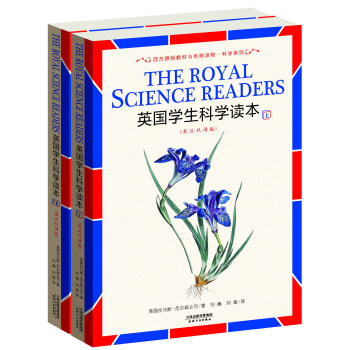


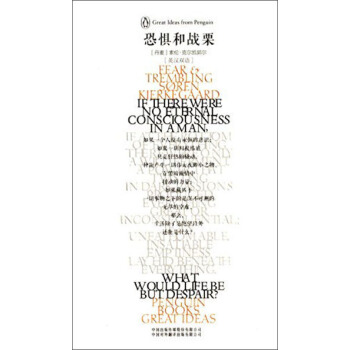

![THE VOICE OF THE CITY: BEST SHORT STORIES OF O. Henry [欧·亨利经典短篇小说] pdf epub mobi 电子书 下载](https://pic.tinynews.org/11643833/54c5d2eaN52ecb5df.jpg)



![英语五千单词百日通(第二版) [Mastering English Vocabulary in One Hundred Days] pdf epub mobi 电子书 下载](https://pic.tinynews.org/11829372/5673c265N25583e59.jpg)


